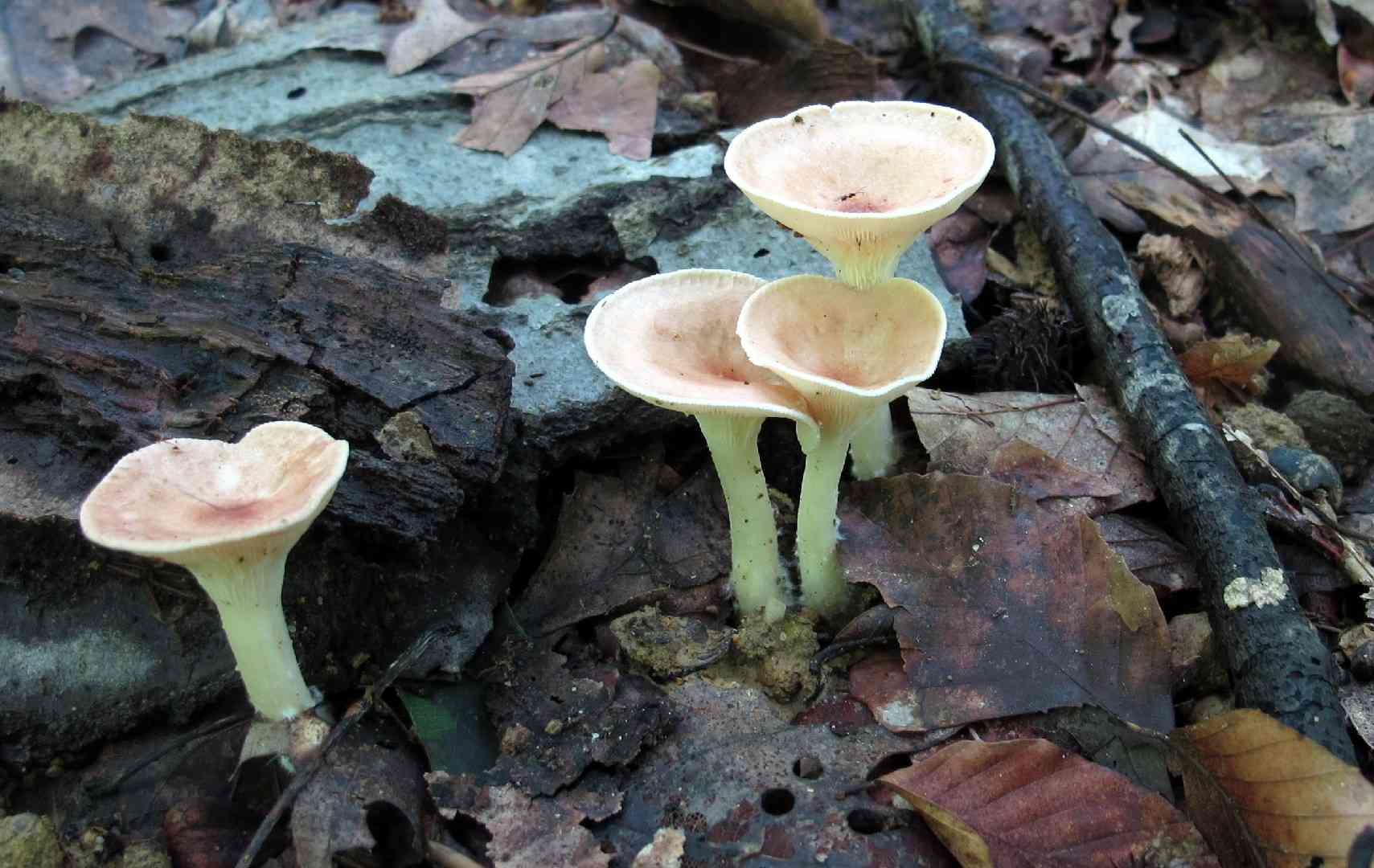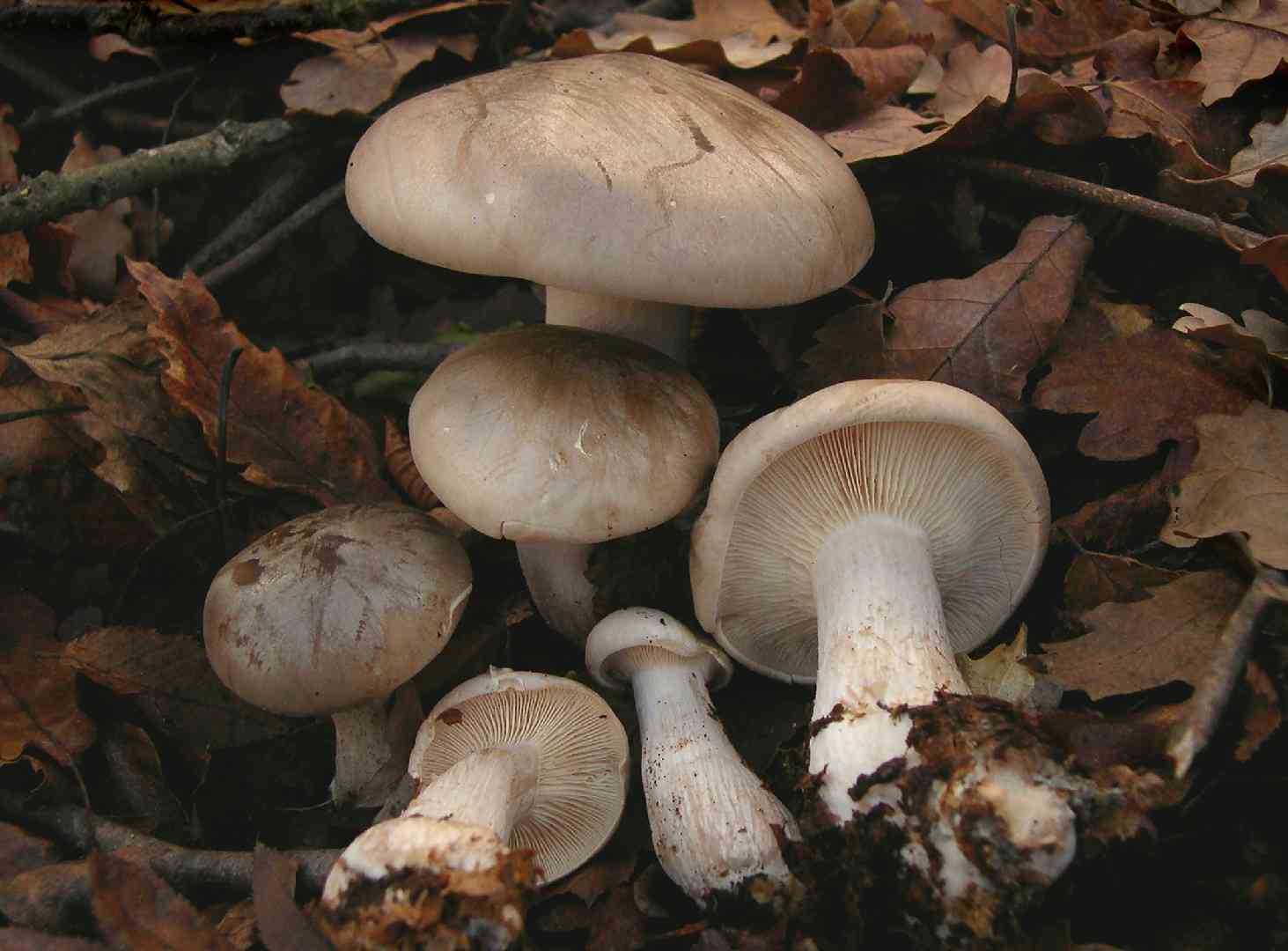
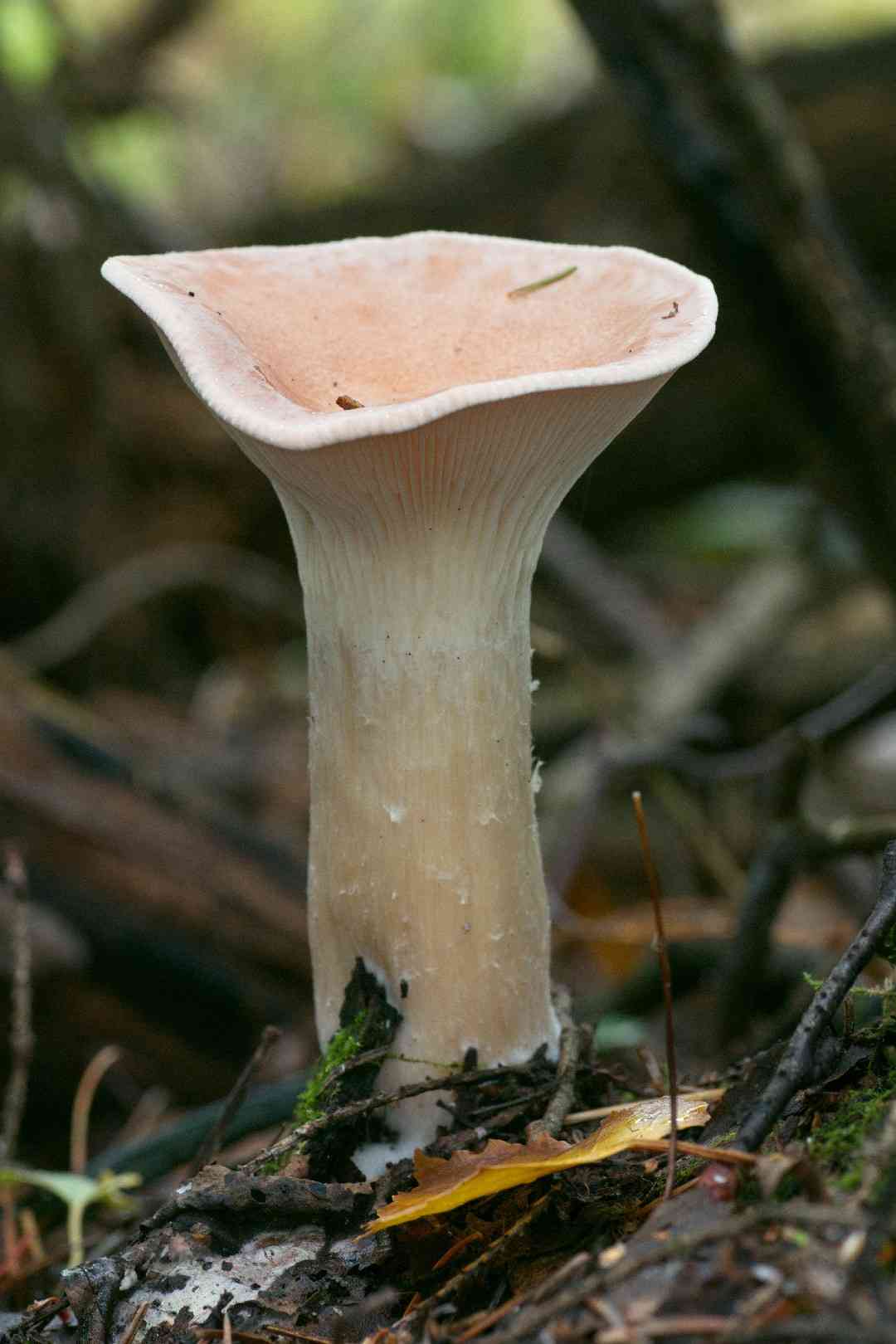
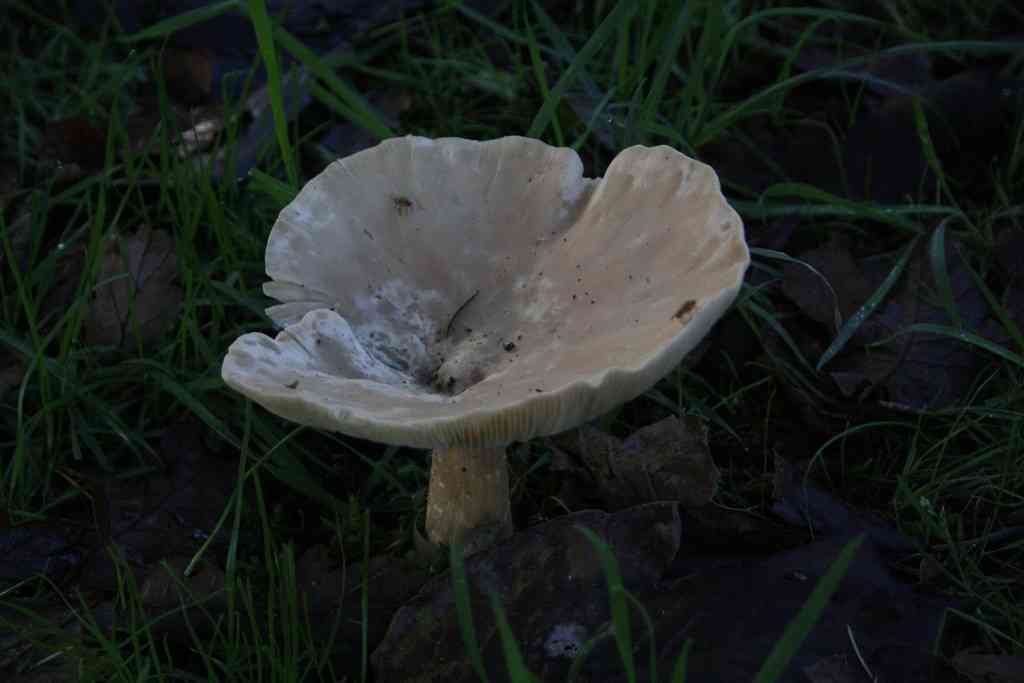
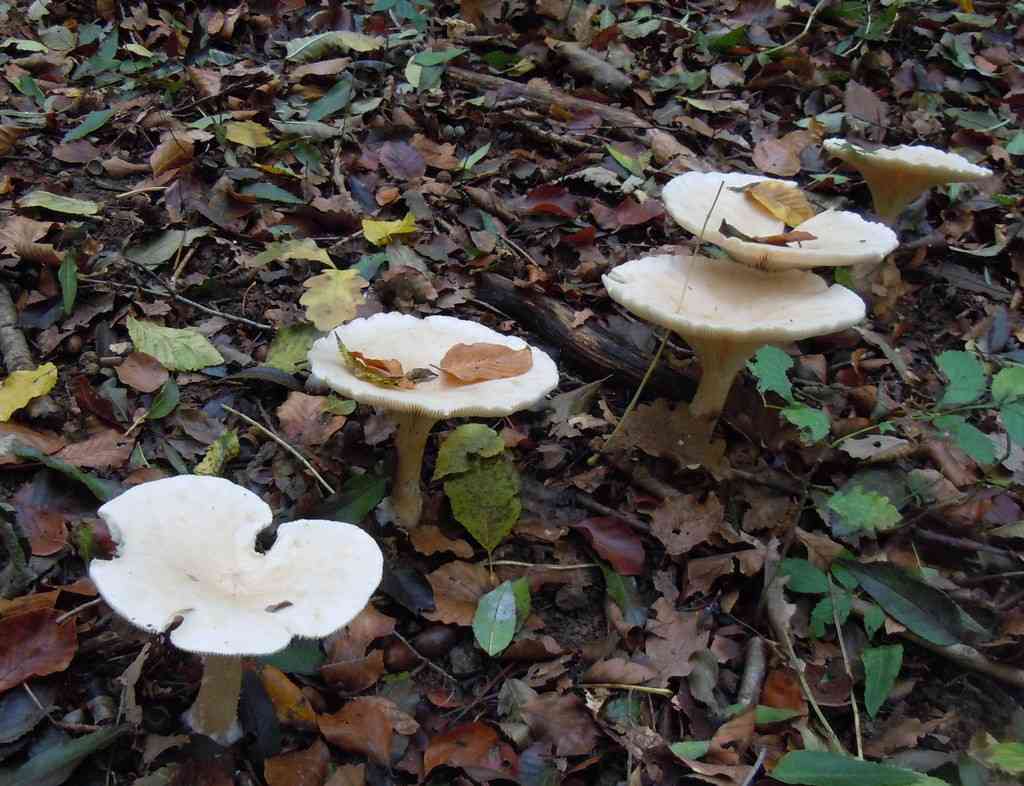
Trooping funnel
Infundibulicybe geotropa
A species of Infundibulicybe.
The troop funnel mushroom, notably tall, frequently appears in clusters or circles referred to as fairy rings, which can span several meters. These resilient mushrooms are capable of enduring frost, often remaining visible into early winter. Caution is advised when handling them, as they have a toxic lookalike: the Livid Pinkgill.
In This Article
Attributes of Trooping funnel
Cap Diameter
4 - 26 cm
Height
6 - 17 cm
Cap
Cap 20 cm across; funnel-shaped; flesh-colored; smooth
Cap Shape
Depressed, Central Bump
Cap Surfaces
Smooth
Gills
Decurrent; crowded; white to yellowish
Gill Attachment
Decurrent
Stem
Slightly winder toward the base; whitish; surface downy
Stem Shapes
Club Shaped
Flesh
Fibrous; white; unchanging
Ring
Ringless
Spore Print Color
Cream
Odor
Sweetish, lavender hint, pungent, bitter almond.
Body Color
YellowCream
Flesh Bruises
The flesh or milk does not discolor when bruised or cut.
Growth Form
Gregarious
Nutrient Gathering
Mycorrhizal
Substrate
On soil
You can find Trooping funnel by these plants
Oaks, Pines, European beech
Occurence Habitats
Deciduous Woodland
Species Status
Widespread in Europe
Endangered Species
No
Scientific Classification of Trooping funnel
Phylum
Club fungi
Class
Mushroom-forming fungi
Order
Gilled fungi
Family
Pale-spore mushrooms
Genus
Infundibulicybe
Toxicity and Edibility of Trooping funnel
Is Trooping funnel Toxic?
Toxicity information is not available for this mushroom. Always consult with an expert before consuming any wild mushrooms.
